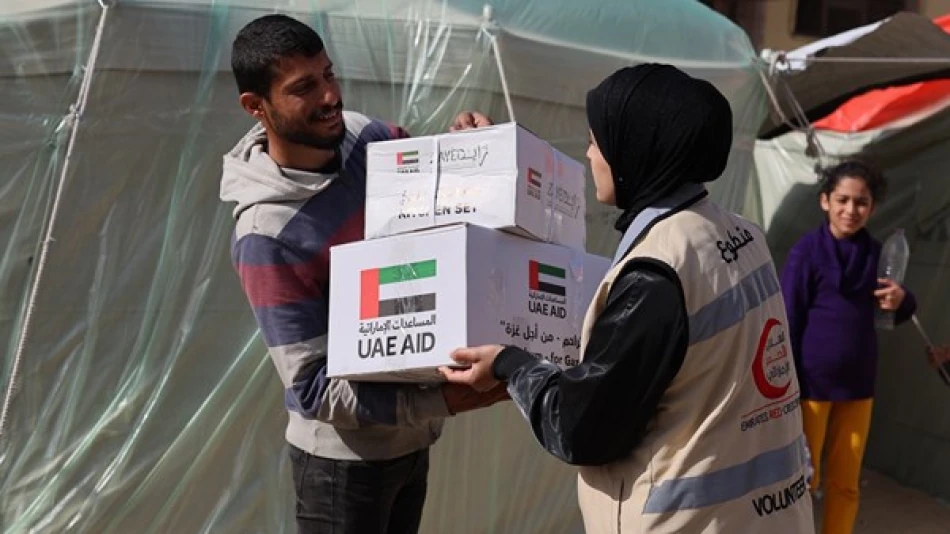
UAE's Aid to Gaza: A Global Model for Humanitarian Relief Efforts
UAE's Gaza Aid Operations Set Global Standard as Humanitarian Crisis Deepens
Palestinian analysts are hailing the United Arab Emirates' sustained humanitarian response to Gaza as a masterclass in crisis management, with continuous aid flows providing a critical lifeline to hundreds of thousands of Palestinian families facing famine-level conditions. The UAE's comprehensive approach—spanning medical infrastructure, airdrops, and evacuation operations—demonstrates how strategic humanitarian intervention can maintain effectiveness even under severe operational constraints.
Medical Infrastructure at the Heart of UAE Strategy
The Emirates has positioned healthcare support as the cornerstone of its Gaza response, establishing field hospitals and conducting ongoing medical evacuations while the territory's health system buckles under pressure. Palestinian political analyst Esmat Mansour emphasized that the UAE's medical equipment supplies and continuous relief campaigns have created sustainable support networks rather than one-off aid deliveries.
This approach mirrors successful humanitarian models seen in other conflict zones, where sustained medical infrastructure proves more valuable than sporadic supply drops. The UAE's field hospital strategy particularly echoes lessons learned from international responses to natural disasters, where rapid deployment of complete medical facilities can compensate for damaged local infrastructure.
Airdrops Overcome Logistical Bottlenecks
The UAE's aerial delivery operations have transported thousands of tons of supplies to areas otherwise unreachable through conventional ground routes, according to Habes Al-Sharouf, director of the Palestinian National Security Research Center. These airdrops represent a tactical solution to the fundamental challenge facing all Gaza aid operations: restricted access through traditional border crossings.
The aerial approach allows the UAE to bypass ground-level complications while maintaining delivery schedules, though analysts note this method cannot fully replace the volume capacity of truck-based supply chains. International observers have praised these operations as innovative responses to complex logistical constraints.
Regional Implications and International Pressure
Palestinian experts are leveraging the UAE's humanitarian success to argue for expanded international pressure on Israel to facilitate larger-scale aid deliveries through official crossings. The contrast between the UAE's operational effectiveness and broader international struggles to deliver aid at scale highlights systemic issues in the current humanitarian framework.
Mansour specifically called for enhanced supervision by international organizations, particularly UNRWA, to ensure aid reaches intended recipients across all sectors. This reflects growing recognition that humanitarian effectiveness requires not just resources but also robust distribution mechanisms and international oversight.
Model for Crisis Response
The UAE's Gaza operations are gaining recognition as a template for humanitarian intervention in complex emergencies. Unlike traditional aid approaches that often struggle with coordination and sustainability, the Emirates has maintained consistent delivery schedules while adapting tactics to overcome access restrictions.
This comprehensive response—combining immediate relief with longer-term medical infrastructure—positions the UAE as a significant player in Middle Eastern humanitarian diplomacy. The approach demonstrates how smaller nations can achieve outsized impact through strategic focus and operational flexibility, potentially influencing how other regional powers structure their own crisis responses.
As the humanitarian situation in Gaza continues to deteriorate, the UAE's sustained commitment provides both immediate relief and a framework for understanding how effective aid delivery can function even under severe constraints. The success of these operations may well influence international humanitarian protocols for future complex emergencies.
Most Viewed News

 Layla Al Mansoori
Layla Al Mansoori






